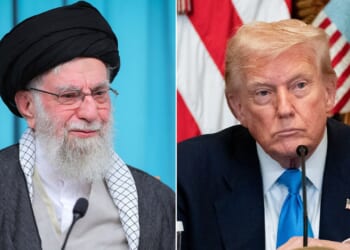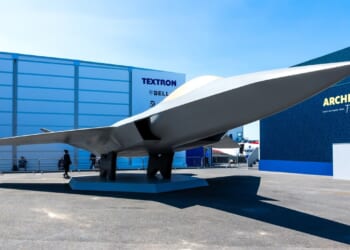Air Force officials have requested up to 145 B-21 Raiders, out of a total bomber fleet of 220 aircraft.
Over the next few years, the US Air Force will add the B-21 Raider, America’s newest stealth strategic bomber, to its fleet. Several of the aircraft are already under production, and although the scheduled introduction date has slipped backwards, it is safe to say that some number of the aircraft will be in regular service by the end of the decade.
How many, however, is a point of contention. The size of the final fleet might be the biggest strength of the new aircraft, according to senior Air Force officials—but the final fleet size is far from established.
The B-21 Could Have Strength in Numbers
During a talk at the Air & Space Forces Association’s Mitchell Institute for Aerospace Studies last week, Air Force Major General Jason Armagost said that one of the most promising attributes of the B-21 Raider is the sheer size of the intended fleet.
“That’s what I’m most excited about. Sixth-generation stealth brings with it … its own set of pretty amazing capabilities, but what I’m most excited about is the ability to build a campaign force,” the senior Air Force officer stated.
The Air Force is nearly doubling its investment in the B-21 for next year, from $5.8 billion to $10.3 billion, with the goal of accelerating production. Northrop Grumman and the Air Force anticipate having at least two B-21s ready for test flights by 2026. The transition from test flight configuration to operational aircraft can be a short one—meaning that the Air Force could have an operational B-21 strike capability in a few months.
Northrop Grumman, the manufacturer of the B-21 Raider, has already received several low-production contracts from the Air Force to initiate the process. The final decision has yet to be made. There is an ongoing debate between senior Pentagon and Air Force officials with respect to the total order of B-21s. Currently, the Air Force aims to procure at least 100 stealth strategic bombers. However, there is a push for even more of the aircraft; Air Force officials have voiced a desire for up to 145 B-21 Raiders, out of a total bomber fleet of 220 aircraft. Overall, the Air Force wants a bomber fleet of 145 B-21s and 75 B-52J Stratofortresses, with the Air Force’s other strategic bombers—namely the Rockwell B-1 Lancer and Boeing B-2 Spirit—retired by around the year 2040.
What Makes the B-21 Raider So Special?
The B-21 Raider is a sixth-generation stealth strategic bomber with deep-penetration capabilities. However, in addition to its stealth and bombing attributes, the B-21 will be equipped with advanced information-gathering sensors, making it a reliable Intelligence, Surveillance, and Reconnaissance (ISR) platform. The B-21’s onboard ISR sensors will allow it to rely on its own systems to track, target, and strike enemy targets. They would also allow the B-21 to direct other aircraft toward targets, thus enabling the kill chain.
The Air Force intends the B-21 to replace the aging B-1 Lancer and B-2 Spirit. The two types of strategic bombers are actively participating in operational, force projection, and training events across the globe. Indeed, the Air Force used several B-2s to strike Iran’s nuclear program in June. However, the B-1 and B-2 would have a harder time penetrating the modern air defense systems of near-peer adversaries, especially China’s anti-aircraft umbrella.
The B-21 Raider is set to be the most advanced strategic bomber once it debuts. But the fact that there will likely be at least 100 B-21s makes the bomber that much more promising.
About the Author: Stavros Atlamazoglou
Stavros Atlamazoglou is a seasoned defense journalist specializing in special operations and a Hellenic Army veteran (national service with the 575th Marine Battalion and Army HQ). He holds a BA from the Johns Hopkins University and an MA from the Johns Hopkins’ School of Advanced International Studies (SAIS). His work has been featured in Business Insider, Sandboxx, and SOFREP.
Image: Wikimedia Commons.


















